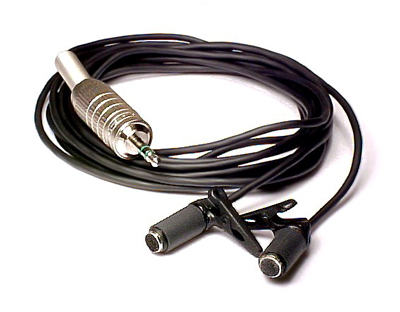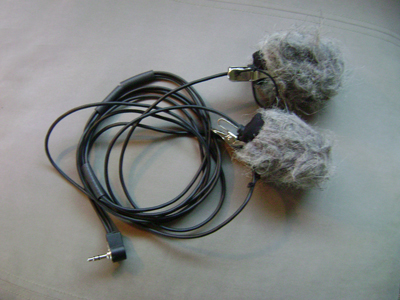Poll # 1 – How far do you live from sasquatches?
Just for fun I thought it would be interesting to see how far researchers think they live from these elusive nocturnal bipeds. Since bigfoot / sasquatches have been reported in 49 states and most Canadian provinces it is apparent that their distribution is much greater than once thought.
So please vote!
[poll id=”0004″]
Context and Barefoot Impressions
Submitted by Galahad
In 2006 I attended the BFRO Cascade expedition. I had heard stories about this location. KJ and a few other investigators had found some barefoot impressions the previous year in late October just before the first snow. The impressions were considered, by some, not to be sasquatch because they did not meet the size requirements. They fell well with in the range of human. KJ found a trackway and followed it for over a mile before it walked into a rocky outcropping and lost the trail. The foot prints were small about 9″, but the stride length was enormous, 43″, for the size of foot. The stride had the tight rope, mechanic. They also had the appearance of walking not running. It walked through rocky, muddy terrain. It was found late October, after the lake level had been dropped for the season. The lake level is kept high for summer and lowered during the fall after labor day.
This trackway was found during the BFRO 2007 expedition. The stride length varies between 38 -40 inches. One stride appeared to be longer than the other. The tracks give no indication of running. Notice the tightrope stride.
These stories from 2005 piqued my interest and so I was looking and found barefoot impressions. So I was determined to come back and look for more after the summer tourist season was over. Come back I did. I taught myself how to cast using hydrocal. The soil is perfect and will yield dermal ridge patterns in certain situations. I found hundreds of impressions. One trackway had a 10″foot with a 43″ stride. In the September – October months I must have went there 6 times casting about 6 or more impressions each time. I was told by many that I was probably wasting my time if I thought I was casting sasquatch footprints. That notion did not dissuade me. I just kept casting. I was learning a methodology. If someday I come across the undeniably big footprint I am ready to cast it. So if for that reason only it has not been a waste of time.
PT is about 6 feet tall with a much larger foot than the impressions we were casting. I asked him to take a normal stride and then try to match the stride of the impressions. They are marked with survey flags. You will note that his normal stride length does not come close. His attempt to match the stride length even falls short. Look at his mechanics when he attempts to match the stride. He is way out of his comfort zone.
It wasn’t until my last visit to the location October 2007 that KJ and I stumbled on to a trackway that was most puzzling. There appeared to be two tracklines one footprint measured 12″-10-1/2″ in length. The other was about 8-1/2″. They were walking side by side. The larger impression seemed to be keeping a slower pace for the smaller trackline. The footprints had the tell tale tight rope mechanic type stride. The odd notation was the flexibility of the feet. I found the variation from one full stride repetition to the next. The right foot measured 12″ in the next right foot impression it only measured 10-1/2″. That was due to the severe curve, not an arch, to the foot. The foot bent in the middle all the way through the foot. It was an AH HA moment. The left foot exhibited an unusual sliding motion that was consistent. It was very unusual in it’s own way. This particular trackline got me looking for a specific mechanic.
This year in 2008 I was able to find the same mechanic. Is it the midtarsal break? I don’t know. I now have focused my attention on finding tracks that exhibit this anomaly. Humans can exhibit something similar but our push off is different.

Finally I took my boots off and walked a parallel line to some interesting tracks. I needed to have a baseline for my impression. Interestingly enough there are some differences. Compare the depth and articulation.
It is the context that makes me think there is something worth discussing regarding these smaller tracks. There does appear to be some contrivances that need to be investigated. It makes me wonder some things. Are we dealing with just juveniles? It was suggested by CM we could be dealing with an Almasty type hominid. Smaller yet very much a sasquatch. I just don’t know the answer. It is too controversial for someone the likes of Dr Meldrum to verify. He has trouble enough with the ones that are totally outside the normal human range. There are two things that give me hope, Context and foot mechanics. If these impressions show a bend in the foot that humans can’t accomplish then we have a story to tell. So I think it is important enough that we should start collecting the data. I am willing to share what I have found. If we can prove these are human footprints then that is a victory too. I just
want to know the truth.
Why Is There No Body?
I talk to lots of people in the general public about the subject of bigfoot and the number one question I always get is:
Why is there no body?
I go through all the usual answers including:
1) they bury their dead
2) the remains are eaten immediately by scavengers or
3) they crawl into the thickets and die where no bones or other remains are found.
When and if a body is obtained the very first thing that would happen after obtaining a complete DNA genome would be to make a human / sasquatch hybrid. I have a friend in Colorado Springs, Colorado who works in a genetics lab. He says that if I can deliver to him two units of blood, he can have a complete genome sequenced with two weeks. I have already heard fellow researchers comment on how great it would be to have a 10 foot tall basketball player and a 800 lb football lineman. Can you imagine an army of soldiers with the strength, size and speed often reported in bigfoot sighting reports.
Several articles on the internet discussing the ethics of hybrids can be found at:
The Ethics of Gene Splicing by Andrew Boardman
Singapore plans to create animals with human DNA
Perhaps the final answer comes from the Bible.
Genesis 1:24-25:
“And God said, “Let the land produce living creatures according to their kinds: livestock, creatures that move along the ground, and wild animals, each according to its kind.” And it was so.
God made the wild animals according to their kinds, the livestock according to their kinds, and all the creatures that move along the ground according to their kinds.
Leviticus 18
Neither shalt thou lie with any beast to defile thyself therewith: neither shall any woman stand before a beast to lie down thereto: it is confusion.
Gift from Santa
I have always subscribed to the idea that many of our Western European folk beliefs are rooted in ancient encounters with hairy wildmen. It is difficult to separate fact from fairy tale but trolls and ogres seem to fit into a likely category of real animals inspiring human storytelling.
Last year there was an interesting article on Cyptomundo entitled Happy Wildfolk Yule! and there is also a book Santa Claus, Last of the Wild Men: The Origins and Evolution of Saint Nicholas, Spanning 50,000 Years by Phyllis Siefker that thoroughly discusses this subject.
November of 2006 I was researching twice a week in my main research area. I had recently purchased a small field GPS. Just for fun I taped it onto my dog’s collar. I wanted to see what distance she would travel while I hiked the two miles of trails. I typically take the same paths in and out of my research area.
After hiking for a mile I sat down on my favorite log and listened to the sounds of the woods. My dog, Belle, came up to me for a quick pat on the head and was gone again on her relentless hunt for something to chase, albeit squirrel, rabbit or deer.
I noticed that the GPS was still attached, although not as securely as when I left the car. Five minutes later she was back and the GPS was missing, obviously it was a poor idea of just taping the unit onto the collar. As it was getting late I decided to wait until the next week to do a more thorough search of the area.
Over the next seven weeks I made six hikes into the area. I kept my eyes open for the missing GPS but it was not seen again.
The second week of January 2007 my research partner called me and asked “Stan, did you lose a GPS unit?” He had found it in the middle of the trail very close to where we always parked our vehicles, about a mile from where it had been lost.
Although we both hiked the same trails we usually hiked on different days so we had probably made a total of ten hikes along the trails.
The GPS was still in the little pouch that I had placed it in, and it was also encased in the duct tape I had crudelywrapped the pouch with. The unit had not been taken out of the case but appeared to look just like it was when it was dropped those weeks before.
How did it get back to the trail entrance? I don’t know but my wife said “I tell you one thing, a human would not find your GPS, leave it in the case unopened and not keep it.” If it had been carried by some animal they certainly knew my scent and knew where I started my hikes.
That little episode changed how I think about the research I have been doing. I have never before dealt with an animal that can perhaps show benevolence and return a lost item. There are several reports of squatches returning lost children and many reports of squatches leaving gifts.
It reminds me of the 1897 editorial:
Yes, Virginia, There is a Santa Claus
Dear Editor—
I am 8 years old. Some of my little friends say there is no Santa Claus. Papa says, “If you see it in The Sun, it’s so.†Please tell me the truth, is there a Santa Claus?
Virginia O’Hanlon
Virginia, your little friends are wrong. They have been affected by the skepticism of a skeptical age. They do not believe except they see. They think that nothing can be which is not comprehensible by their little minds. All minds, Virginia, whether they be men’s or children’s, are little. In this great universe of ours, man is a mere insect, an ant, in his intellect as compared with the boundless world about him, as measured by the intelligence capable of grasping the whole of truth and knowledge.
Field Recording – Microphones
Microphones have often been said to be half the equation when it comes to recording. Experts advise to spend an equal amount of money on the recorder and an equal amount on the microphone. A great recorder with a poor microphone is just as bad as a poor microphone with a great microphone.
Common types of microphones used in field work fall into three categories. Â These three types have the xlr connector attached that the better recorders require.
Microphones with XLR Connectors
1: Omnidirectional – I prefer this type of microphone when I leave my system unattended in the woods for an extended time. Obviously I will not know the direction of the sound so I must record in all directions.
 Seenheiser MKH20 Omnidirectional Microphone
Seenheiser MKH20 Omnidirectional Microphone
2: Directional – includes short and long shotgun style microphones. Many of my better bird recordings were gathered by walking through the woods and pointing the shot gun in the direction the bird song was coming from.
 Sennhesier MKH70 Long shot gun microphone
Sennhesier MKH70 Long shot gun microphone
3: Parabolic – this type of microphone has been used extensively in recording birds. There is a wide variety of microphones used with parabolic reflectors.
Telinga BioAcoustics Parabolic Microphone
Microphones with 1/8″ Connectors
For the smaller digital recorders requiring the 1/8″ connector a great reasonably priced stereo omnidirectional microphone.
Giant Squid Audio Lab’s – Podcasting Omni Stereo Microphone
or for top of the line in a stereo omnidirectional microphone.
Field Recorders – Pt 4
This short series on recorders is not to compare units of $160 vs $5000, but instead is simply my recommendation within each price range.
Last time we looked at a recorder that was listed under $450. The next step up is:
Around $1300.
In the high-priced range is the Marantz PMD 670/671.
In an attempt to make the pre-amps quieter Oade Brothers Audio does modifications on various recorders. It is my suggestion that anyone looking at the Marantz for nature recording only buy a unit from Oade that has had the pre-amps modified. The quality of my recordings were dramatically improved after this modification.
The manufacturers website:
The user’s manual can be found at:
Forums discussing this recorder are:
Recording media – uses a CompactFlash card.
Maximum recordable time – Using a 4 GB card the record time in .wav at 44.1kHz 16bit CD quality mode is 6 hours 30 min.
Batteries – uses D batteries – about 8 hrs record time, I use an external battery supply.
Recordings:
Sound clips –
1 – Using a non-modified Marantz 671 DB Donlon recorded what he calls the East Central Ohio Chatter.
2 – Using a modified Marantz 670 I recently recorded this lone coyote. Most of the recordings on my website were made with this recorder before I had it modified.
Microphones – both DB Donlon and myself have been using the AT3032 Omnidirectional Condenser Microphones. However these mics are no longer being made. I typically use omnidirectional mics because I am leaving my gear overnight in the woods therefore I do not know which direction the sound will be coming from.
Conclusion – I have been recording with the 670 for 4 years now. It has been proven to be consistent, easy to use and durable. After having the unit modified the quality of my recordings were greatly improved.
Pros:
– great sound quality
– very easy to use
– sturdy build
Cons:
– battery compartment is poorly designed
– plastic body


















